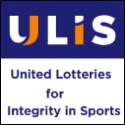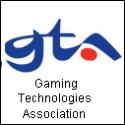Federal Circuit Affirms Unpatentability of Gaming Machine Patent
![]() USA (June 1, 2023) — On May 9, 2023, the United States Court of Appeals for the Federal Circuit (“CAFC”) issued an opinion affirming the unpatentability decision of the Patent Trial and Appeal Board (“Board”), finding, with respect to the independent claims, that the Board either did not misconstrue the claims or that any error with respect to the Board’s claim construction was harmless. With respect to the dependent claims, the CAFC found that there was a sufficient motivation to combine the asserted prior art references. Bot M8 LLC v. Sony Interactive Entertainment LLC, No. 2022-1291, — F.4th –, 2023 WL 3311550 (Fed. Cir. May 9, 2023).
USA (June 1, 2023) — On May 9, 2023, the United States Court of Appeals for the Federal Circuit (“CAFC”) issued an opinion affirming the unpatentability decision of the Patent Trial and Appeal Board (“Board”), finding, with respect to the independent claims, that the Board either did not misconstrue the claims or that any error with respect to the Board’s claim construction was harmless. With respect to the dependent claims, the CAFC found that there was a sufficient motivation to combine the asserted prior art references. Bot M8 LLC v. Sony Interactive Entertainment LLC, No. 2022-1291, — F.4th –, 2023 WL 3311550 (Fed. Cir. May 9, 2023).
Bot M8 LLC (“Bot M8”) owns a patent for a gaming machine that has two boards, including a motherboard, and that is directed to authenticating certain data. The independent claims require, inter alia, that the “game program” be written to the motherboard only after the game program has been authenticated. The dependent claims require, inter alia, two different CPUs—one on the motherboard, one on the other board—for executing an “authentication program” and a “preliminary authentication program.”
Sony Interactive Entertainment LLC (“Sony”) petitioned for inter partes review (“IPR”) of the patent, alleging that the claims are obvious over various combinations of prior art references, including “Johnson,” “Martinek,” “Morrow ’952,” and “Diamant.” The Board issued a Final Written Decision finding the challenged claims unpatentable.
On appeal, Bot M8 renewed the argument it made below—i.e., that claim 1 excludes writing any type of data, regardless of whether the data is game data, to the motherboard before the game program is authenticated. The Board rejected that argument below, finding it inconsistent with the claim language itself, which only precludes writing the game program to the motherboard before it is authenticated. The CAFC agreed with the Board, noting that Bot M8 failed to offer a persuasive reason to interpret the claim to exclude the writing of any other type of data to the motherboard prior to authentication of the game program.
Bot M8 also argued on appeal that claim 1 should be read to at least exclude prior art in which a portion of the game program is written to the motherboard prior to authentication. In support of that argument, Bot M8 cited to the following portion of the Final Written Decision: “[Bot M8] seeks to read into claim 1 a requirement that nothing related to, or any portion of, the gaming information be read into [the motherboard’s] RAM from the mass storage device of Johnson prior to authenticating the game program.” The CAFC assumed for the sake of argument that Bot M8’s assertion—that claim 1 precludes any portion of the game program from being written to the motherboard prior to authentication—was correct, but still affirmed under the harmless-error rule. Specifically, the CAFC noted that Bot M8 was unable to show that the Board relied, “or even might have relied,” on an interpretation that allows writing portions of the game program to the motherboard prior to game authentication. Further, the CAFC found that it was unnecessary for the Board to have relied on such a construction, because both Johnson and Morrow ’952 disclose writing only non-game program data to the motherboard before authenticating the game program. Citing to Sony’s expert testimony, the Board noted that Johnson explicitly illustrates loading only enough of the operating system that is needed to access the relevant files stored and perform the verification procedure, “which would have been understood not to include game programs.” The CAFC found that substantial evidence supported the Board’s finding in this regard and affirmed.
With respect to the dependent claims, which require two different CPUs—one on the motherboard, one on a different board—for executing the “authentication program” and “preliminary authentication program,” respectively, Bot M8 argued that there was no motivation to combine Johnson, Martinek, and Diamant.
Below, the Board found that (1) Martinek discloses a board (different from the motherboard) with a CPU (different from the motherboard’s CPU) that can execute an authentication program, and that (2) Diamant discloses a preliminary authentication program, while (3) Johnson discloses the other limitations. The Board also found sufficient motivation to combine the three references, citing to Sony’s expert, who opined that “using processor 505 of Martinek to first authenticate Johnson’s verification module before loading it into [the motherboard’s] RAM accomplishes the goal expressly described in Martinek of acting as a gate to ‘allow data to enter a host computer only after validation.’”
On appeal, the CAFC concluded that Bot M8 failed to show why a reasonable factfinder would not have found Sony’s motivation-to-combine reasoning persuasive. The CAFC therefore affirmed the Board’s obviousness determination as to the dependent claims because substantial evidence supported the factual underpinnings of that determination.
SOURCES: Shearman & Sterling LLP – Lexology.
Tags: gaming machines, USA, Internet, Ligitation, Patents



























